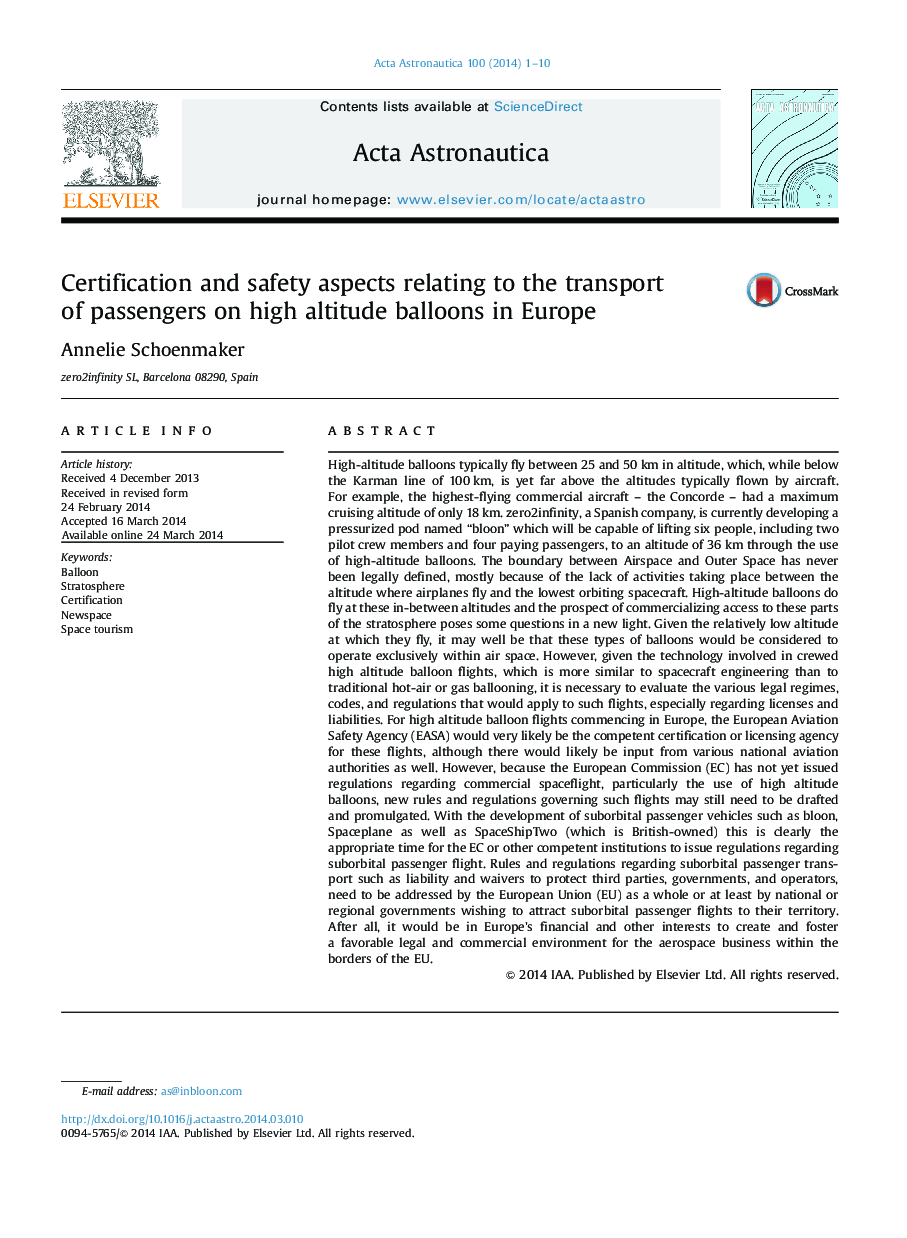| کد مقاله | کد نشریه | سال انتشار | مقاله انگلیسی | نسخه تمام متن |
|---|---|---|---|---|
| 1714533 | 1519952 | 2014 | 10 صفحه PDF | دانلود رایگان |
• Competence for certification with commercial passengers lies with EASA and the EC.
• Existing regulations will need to be adapted by combining air and space regulations.
• Contrary to Europe, in the US a commercial spaceflight operator can get a license.
• An in-depth analysis of the safety of the system will need to be conducted.
• Europe needs a legal framework for its own economic and competitive benefit.
High-altitude balloons typically fly between 25 and 50 km in altitude, which, while below the Karman line of 100 km, is yet far above the altitudes typically flown by aircraft. For example, the highest-flying commercial aircraft – the Concorde – had a maximum cruising altitude of only 18 km. zero2infinity, a Spanish company, is currently developing a pressurized pod named “bloon” which will be capable of lifting six people, including two pilot crew members and four paying passengers, to an altitude of 36 km through the use of high-altitude balloons. The boundary between Airspace and Outer Space has never been legally defined, mostly because of the lack of activities taking place between the altitude where airplanes fly and the lowest orbiting spacecraft. High-altitude balloons do fly at these in-between altitudes and the prospect of commercializing access to these parts of the stratosphere poses some questions in a new light. Given the relatively low altitude at which they fly, it may well be that these types of balloons would be considered to operate exclusively within air space. However, given the technology involved in crewed high altitude balloon flights, which is more similar to spacecraft engineering than to traditional hot-air or gas ballooning, it is necessary to evaluate the various legal regimes, codes, and regulations that would apply to such flights, especially regarding licenses and liabilities. For high altitude balloon flights commencing in Europe, the European Aviation Safety Agency (EASA) would very likely be the competent certification or licensing agency for these flights, although there would likely be input from various national aviation authorities as well. However, because the European Commission (EC) has not yet issued regulations regarding commercial spaceflight, particularly the use of high altitude balloons, new rules and regulations governing such flights may still need to be drafted and promulgated. With the development of suborbital passenger vehicles such as bloon, Spaceplane as well as SpaceShipTwo (which is British-owned) this is clearly the appropriate time for the EC or other competent institutions to issue regulations regarding suborbital passenger flight. Rules and regulations regarding suborbital passenger transport such as liability and waivers to protect third parties, governments, and operators, need to be addressed by the European Union (EU) as a whole or at least by national or regional governments wishing to attract suborbital passenger flights to their territory. After all, it would be in Europe׳s financial and other interests to create and foster a favorable legal and commercial environment for the aerospace business within the borders of the EU.
Journal: Acta Astronautica - Volume 100, July–August 2014, Pages 1–10
